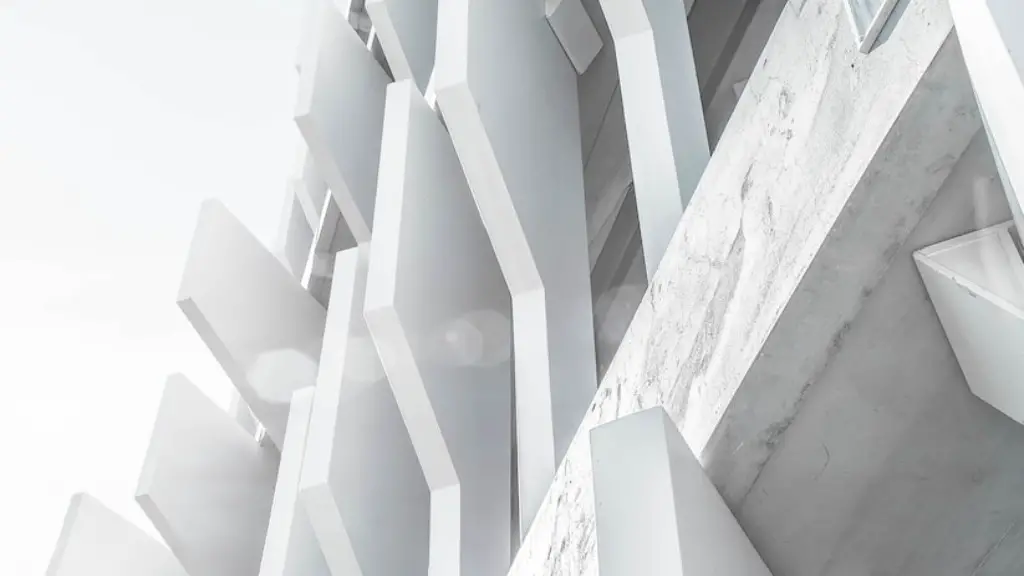Introduction
Carceral architecture is the field of architecture that is concerned with the construction and design of prisons and jails, as well as other related structures such as walls, fences and security barriers. It is a relatively new field, having gained much greater attention since the late 1960s. Architectural historian Louise Shipley describes it as the ability to ‘equalize the power disparities between those within the social hierarchy’. This means that the design of prisons must take into account the different needs, security requirements, living standards, and access to facilities of various social groups in the prison population.
Purpose
The purpose of carceral architecture is to create a space that will limit social interaction as well as exacerbate the feeling of alienation and helplessness felt by prisoners. This is done through the use of small cells, narrow corridors and walls preventing prisoners from seeing beyond the prison walls. Architectural historian Frances Gateward writes that carceral architecture ‘designs for power and for control, for invisibility and for compliance, for separation and for control’. Such designs are intended to minimize the potential for the occurrence of violence or riots. Carceral architecture is intended to reduce the opportunity for prisoners to engage in criminal or delinquent behavior.
Critique
Carceral architecture has often been criticized for its punitive role in prisoners’ lives. In many prisons, the prison cells are designed to be uncomfortable and intimidating, often deliberately so. Prisoners are often held in isolation, sometimes for extended periods, leading to severe mental health problems. In some countries, most notably in the United States, prison guards have been accused of abusing the prisoners under their supervision, leading to further suffering.
The large and growing incarceration rates, even in countries where the crime rate is falling, have led some to complain that carceral architecture is contributing to this. One theorist suggests that ‘the architecture of the prison has become an instrument for an increasingly retributive justice system’.
Alternatives
In recent years, there has been a move away from more punitive approaches to carceral architecture in some countries. In Scandinavia, for example, many prisons have been redesigned to reduce the sense of confinement and to make the environment more open and communal. Cells are generally larger and more well-lit, and prisoners are given access to social spaces, outdoors spaces, exercise spaces and other facilities. Studies suggest that such approaches can have a positive impact on prisoners’ mental health and chances of rehabilitation.
In the United States, some jurisdictions have begun to experiment with more humane approaches to prison design. The Prison Congress, based in Atlanta, has proposed a design for a prison that would be based on therapeutic principles and feature open spaces, gardens, courtyards, education and cultural centers and other features designed to make prisoners feel less isolated and more engaged in their own rehabilitation.
Problems
Although some of these approaches to prison design are promising, there are still serious problems in many prisons. One problem is the lack of access to basic facilities, such as medical care and recreational activities. Many prisons are overcrowded, leading to further overcrowding. Additionally, some prisoners are kept in solitary confinement for long periods, which can cause mental health problems. Finally, there is the issue of cost; prisons are expensive to build and maintain, and there is growing pressure to reduce these costs.
Ongoing Challenges
The evolution of carceral architecture is ongoing and there are many challenges that need to be addressed. One of the biggest is the tendency of prisons to be designed in response to crime rather than in the context of overall social justice and rehabilitation. Prisons must be designed with an emphasis on the importance of reintegrating prisoners into society and providing them with the necessary skills and opportunities to do so. Additionally, prison design should be tailored to the specific needs of each prisoner, taking into account individual characteristics such as age, gender and mental health status.
Political Perspective
The current political landscape has a significant influence on prison design and policies. In the United States, for example, the criminal justice system has been criticized for being biased and targeting certain racial and ethnic
groups. Prisons must be designed with this in mind, taking into account the different needs of different racial and ethnic populations, as well as their potential for rehabilitation.
Conclusion
Carceral architecture is an important and evolving field of design and construction. It is a complex field, with a range of different political, social and economic considerations. The current challenge facing carceral architecture is to create designs that are both humane and effective in reducing crime and promoting rehabilitation. Prisons must be designed to reduce the sense of confinement and isolation while also providing a safe and secure environment for prisoners. Ultimately, the goal must be to create spaces that help to reintegrate prisoners into society and provide them with the necessary skills and opportunities to do so.

